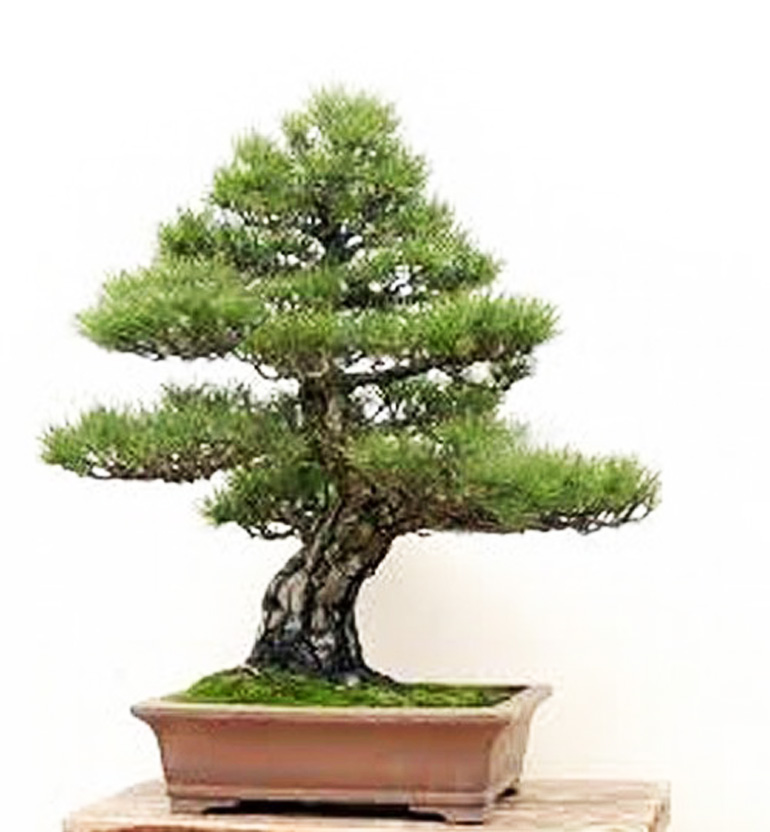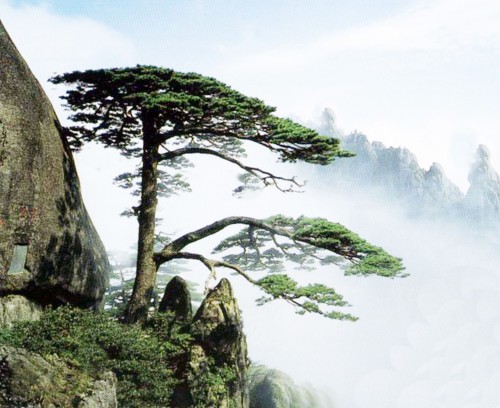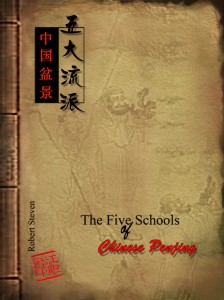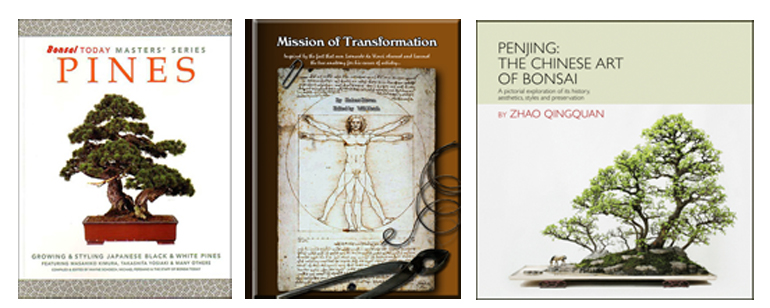
Robert Steven’s simulation of a Japanese black pine that was submitted by Mike Liu (Mike’s original is below).
I’m on a vacation of sorts, so we’ll dip back into our archives. This one is from 2010. I picked it for a couple reasons: first, Robert Steven is one of those bonsai artists that bothers to explain how he gets from point A to point B and why he takes the path he does.
The second reason I chose to re-post this one has to do with Penjing and its place in the world of bonsai. Much of what we do with bonsai and how we see bonsai is influenced by Penjing, which provides a nice counter point to the strong influence of Japanese bonsai.
Mike’s original photo that was submitted to Robert.
Robert’s Critique
The Five Schools of Chinese Penjing
The above black pine bonsai is sent by Mike Liu from China. Since Chinese bonsai is called penjing, I will offer a brief discussion of penjing.
The main difference between penjing (Chinese: pen = pot; jing = panorama) and bonsai (Japanese: bon = pot; sai = plant), despite the terminology, penjing is more about artistic nuance in portraying natural phenomena; and bonsai is more disciplined in technical skill with the objective of suggesting the physical perfection of an old tree. Penjing is more symbolic as well as a media for the artist in expressing his emotional ideas. To a certain extent, bonsai is rather bounded within its convention and rules; where penjing is more free as personal expression.
As the above bonsai was created in China, I will give my critique from the Chinese penjing’s perspective; and at the same time, give readers better understanding about Chinese penjing, especially of the different schools.
Due to the climate difference, local species, culture, interest, habit, history, value of appreciation and other local aspects, there are many distinguish styles of Chinese penjing from one area to the other. But in general, they can be divided into five main schools: Lingnan (Lingnan Pai), Shuzhou (Shu Pai), Yangzhou (Yang Pai), Sichuan (Chuan Pai) and Shanghai (Hai Pai). Beside these, there are some other minor schools formed later as interest in penjing grew in China e.g. Nantong (Tong Pai), Zhejiang (Zhe Pai), Wei Pai etc. But these relatively new schools are not considered among the main schools because they have neither strong historical background nor obvious distinction in concept and style.
A school is formed when a certain distinguished style is identified and recognized as being practiced by followers in a certain area or community, and after having gone through a long processing period before being admired by the national penjing community. Some schools keep developing through refining the technical aspect without losing their specific characters and identity; but some are transforming as the consequence of global cultural interaction.
The above penjing (I use “penjing” in this context) is a mixture of Lingnan Pai and Yang Pai. Beside the famous “clip-and-grow” form, the other most distinguished character of Lingnan penjing is the long lower branch as seen on the above tree. But normally such a branch in Lingnan is not so straight and flat, but rather will show curving lines to suggest a flowing image.
Such straight and flat foliage pads are only found in Yangzhou (Yang Pai) penjing and are called “clouds”.
This branch in this penjing is quite disturbing. It looks unnatural without suggesting any morphological reason. Long one-sided branches on pines (in nature) are normally formed on trees that grow on high mountain sides where branches grow away from the mountain towards the sun light. These pinse normally will not have a rounded crown because the heavy snow will disturb the apical meristem to form a flatter apex, and force flatter pads on the dominant branches. Understanding plant physiology and morphology helps with bonsai design; you can read more about this in Mission of Transformation.
Another reason why this penjing does not look good can be explained by an aesthetic principle. The line and form of this flat straight branch is not integrated to the line and form of other physical elements, so it looks like it doesn’t belong to the same tree. For more on lack of consistency and unity you can read about about aesthetic principles in Vision of My Soul (out of print).

Typical shape of pines which grow on mountain sides in the Yellow Mountain in China
At the top of this post is my simulation without the long straight branch. This penjing is more of the Shanghai (Hai Pai) penjing which looks closer to what we understand as Japanese bonsai. The reason is that Shanghai was one of the first cities in China with more contact and interaction with the outside world and more influenced by foreign cultures including bonsai and other art forms.

There’s lots to talk about Chinese penjing. My third book The Five Schools of Chinese Penjing is in the works. It will describe of each schools, the history, concept, technique and styles (note from the present: Robert is a very busy person, so things don't always happen as planned; including this book, which is not yet available).
General comments
There is more than one way to design any bonsai and my critiques and recommended solutions might not always fit your taste because of personal preferences. But I always try to give my opinion based on artistic and horticultural principles.
To understand my concepts better, please read my books Vision of My Soul (out of print) and Mission of Transformation which are available at Stone Lantern.
You can also visit my bonsai blog.
 Three relevant books. Masters Series Pines, Robert’s Mission of Transformation and Penjing, The Chinese Art of Bonsai.
Three relevant books. Masters Series Pines, Robert’s Mission of Transformation and Penjing, The Chinese Art of Bonsai.